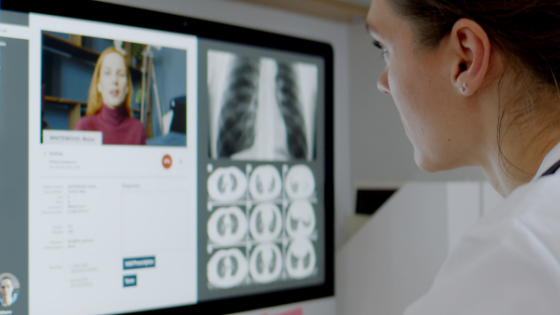During the coronavirus pandemic, we’ve had to completely change the way we think about health and safety, especially for healthcare providers.
Traditionally, health and safety takes in-person engagement for granted. The healthcare sector also traditionally assumed that in-person patient interaction was a necessity of care. But with the pandemic running wild, the reality is that every in-person interaction with someone outside your own household puts you at risk.
This is why telehealth has seen a surge in popularity and will become a critical tool of care during the pandemic.
How Telehealth Is Being Used During COVID-19
During the coronavirus pandemic, telemedicine has emerged as a viable option to provide treatment while protecting both doctors and patients from unnecessary exposure.
Picture the usual experience of visiting a family doctor. You have to drive to their office (in a rural area, you may need to drive a significant distance). You have to sit in the waiting room for a good long while, surrounded by other patients also waiting. Then you are ushered into an exam room and continue to wait for the doctor, all for a fifteen-minute meeting to diagnose what’s going on.
Every step of the way, you’re exposed to other people – nurses, doctors, fellow patients – who pose a significant risk of transmission.
Telehealth offers a way to reduce the risk and maximize care, along with a few other benefits.
Increase in Physician Supply
The pandemic has already created an incredible burden for healthcare providers. There simply are not enough doctors to treat every patient in their area.
If you’re using in-person services, that is.
While the supply of healthcare providers still remains extremely low relative to the demand for their services, telehealth opens up the supply of available providers to a much broader audience, allowing them to achieve geographic load balancing.
Picture a patient in a rural area who has to drive two hours to an overcrowded doctor’s office. Even if they could get a digital appointment, the doctor may not have enough capacity to see the patient urgently.
However, a doctor a few counties over might be able to make it work.
Maximizing Workforce Potential
Because telemedicine allows doctors to provide basic patient care without in-person contact, it also offers an opportunity for healthcare providers to maximize their workforce potential.
Unfortunately, the high level of risk for frontline healthcare providers means that some of them have to be quarantined. Under normal rules of in-person care, those providers would be completely out of commission.
With telehealth solutions, these providers can continue to provide basic care, direct-to-consumer care, and intake services, freeing up other physicians to focus on in-person care.
Navigating Telehealth in the Pandemic
Telehealth is just one of the many ways that healthcare providers can continue to care for their patients in times of crisis. If you work with healthcare providers, now is the time to invest in telehealth infrastructure. If you work in a different field, encourage your workers to seek telehealth options first.
For more information on the coronavirus crisis, make sure to check out our blog for more great posts, like this one on the importance of social distancing during the pandemic.
